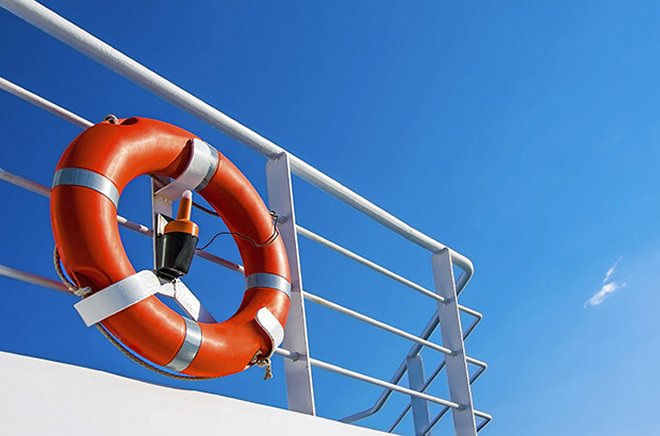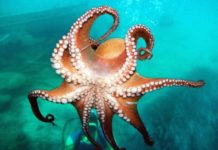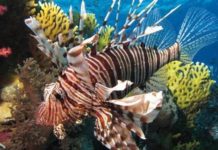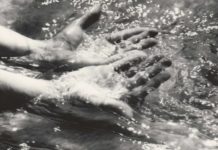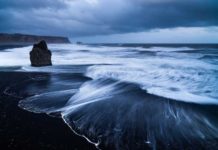Driving a boat requires prudence, maturity and certainly some basic knowledge is required, so you and the occupants of the boat to enjoy the beauty of the sea and get rid of any nasty problems that can occur when some important practices or knowledge are not followed.
It is much should the user to know and, unfortunately, we can not develop all in some pages. Here we will try to simply develop some of the chapters related to the subject, so that the reader can exactly understand the importance of safe navigation.
What is important is to simply use words and not specialized theories that will certainly complicate the reader.
Let’s first look at the definition of a speedboat, which is the issue that will analyze, as we shall see some fundamental knowledge to be the operator in order to ensure proper and safe navigation.
SPEED CRAFT
Means any motor boat, whatever type or material of construction, which will bring outboard engine exceeding 30 HP. If the vessel has a stern-out engine or inboard petrol engine should have power over 40 HP, while, conversely, for vessels equipped with inboard engine, he should have power over 50 HP. Speed craft also considered and each jet-sea scooter, whose horsepower to be more than 15 HP.
Finally, we considered cruisers all the traditional wooden boats equipped with inboard engine [Article 2 of G.K.L. No. 22 (GG vol.B 9 / 13.01.2000)].
Here, of course, it is clear that the text will refer to fiberglass or inflatable vessels with length up to 6,50 m, which is now the most sought after for fishing enthusiasts.
In these categories the divide into open type (open) and the most popular, in my view, the semi-closed circuit (pilotina). And the two classes are equally good and have excellent performance for purposes of fishing or even for short sea trips.
Of course, the cost factor is that the interested buyer should think, and finally decide what boat interested in acquiring.
but any would be the decision, you must first obtain a special speedboat license.
Permission is granted to the candidate from the respective port authorities of the state, after successful tests in both the theoretical and the practical side of safe navigation.
A necessary condition for the candidate to have reached 18 years of age and in any case must provide medical advice capacity for the relevant license.
The syllabus given by the port authorities or by the local special school. Information may be obtained from the respective Authorities of your city.
Not having a license from owners cruisers considered serious misconduct and brings great effects.
BOAT DESIGN CATEGORIES
Each boat market accompanied by the health certificate. The certificate lists important information relating to the vessel, such as manufacturer name, material, country of manufacture, no. Ship registry, ISO certification, certification that the vessel follows the EU directives on ship safety, and many other useful information relating directly or indirectly by the buyer.
An important, but information should be kept in mind is the category of vessel to which it belongs, and below you will see how important it is and how it should be taken into account of the owner.
There are a total of four design categories.
The first category (A) included vessels are designed to make long journeys, which may wind force conditions over 8 Beaufort and significant wave height, more than three / four meters.
In the second category (B) included vessels are designed for traveling in the open sea, where there may be wind force up to 8 Beaufort and significant wave height up to four meters.
In the third group (C) included vessels are designed for coastal trips, large bays, estuaries, lakes and rivers, where they occur, wind force up to 6 Beaufort and significant wave height up to 0.5 meter.
In the fourth category (D) included vessels are designed for traveling in small lakes, rivers and canals, where they can wind force up to 4 Beaufort and significant wave height up to 0.5 meter.
These categories will be applied to all vessels, according to the category they belong to, and certified by the relevant health certificate, so that the operator is aware of the possibilities of safe navigation of the vessel.
Finally, it would be the operator avoids any experimentation, and be content with safe travel, with calm seas.
NAUTICAL INSTRUMENTS BOARD
The nautical instruments board vary, depending on the license granted by the respective Authorities of the country. The with which a boat shall be provided fundamentally, however, instruments are:
MAGNETIC COMPASS
The key, I would say, nautical instrument. The compass is showing us our predetermined path, that is, as we say, the way of the bow. The compass, along with the map gives us a safe navigation.
Of course, you must know that the magnetic compass needle is magnetized to magnetic north, not to correct. This has cost a bug called deviation. The error is corrected by some calculations, which are fortunately not needed for operators of small vessels voyages.
It is important that they should understand very well the operation of the compass.
V.H.F.
Although mobile phones make great strides, it is not enough for us to say ‘because we want the wireless. ”
A mobile phone can easily lose the signal or, more often, to let our times the battery. Then comes the time when we remember the need for a Navy radio (marine V.H.F.).
Of course, not to be misunderstood, the V.H.F. only for purposes of immediate danger for the operator and passengers and relay distress alerts from other ships sail to the nearest port authority.
The radio can only be useful in coastal areas, where the board and land distance not exceeding 30 nm. (Nautical mile = 1.852 m).
A built V.H.F. of 5 W is enough to meet the above needs. Working at Channel 16, which is still considered the emergency channel, and I say yet because today there available risk channel 77 in DSC radio, which belongs to another category.
Also, the radio is useful because through it receive weather reports, and other useful information transmitted from shore.
G.P.S. (Global positioning system)
Simply put, it is the tracking system of our position. This system was adopted in 1973 and 1994, active now, with the help of 24 satellites give us now the almost exact point (position) us into the sea.
The G.P.S. take the length and breadth translated in degrees, and this information to take on our map, which gives us the exact spot board. Today there are many kinds G.P.S. commercially, both embedded and in the portable.
The latter, however, been a G.P.S. Plotter us has made life easier, since our mark appears just to the selected electronic charts has loaded the system.
Its usefulness is quite important both for easily finding the position of the vessel, but also to detect human life at risk.
The operator of a vessel would need to know and correctly read a nautical chart,
which is considered the source of information for safe navigation.
Of course, this part needs to be developed in order for the operator to understand the importance of the utility of a Mercator map. Certainly in the next chapters we will analyze this with more words. Today, information in all areas is simple. The sources can also be the site, educational books, private schools etc.
LIFE-SAVING & FIRE SAFETY
Saving appliances and fire protection means by which it should be provided a boat, identified by the relevant commissioning certificate issued by the Authorities of the country. In summary we will see the main instruments of both categories a vessel required to be provided.
LIFE JACKETS
It is this instrument that will give us the positive buoyancy in the sea in an emergency and when forced to find ourselves in this undesirable.
The lifejackets are orange color and this is because the color is distinguished very easily over long distances.
They are also equipped with reflective strips, whistle and light overnight. The number of lifejackets to be installed in the vessel depends on the maximum number of occupants Protocol board given by the manufacturer.
Certainly, the number of life jackets should be greater by at least one more. permanently stored on board and used throughout the course of cruising. Instructions are usually given up on them.
In the market there is a wide range, but definitely the life jacket and all the above means should be of an approved type.
LIFE JACKETS DEVICES
This instrument is very related to the life jacket, except that the buoyant apparatus is not individual, but serves all occupants in an emergency. And this, in turn, is the medium that provides the desired buoyancy in the water.
Usually square or rectangular, orange, and around with it a rope meant to keep it and help us to hold on to the surface if necessary.
SAFE COILS WITH ROPE
Lifebuoys providing positive buoyancy in human lives at risk in the water.
Just, just find someone in distress, we approach carefully and pour the lifebuoy towards him, to assist him, so hold on to it and then the shoot toward the boat with the help of the rope with which It fitted to the lifebuoy.
They also have orange color and reflective strips. All lifebuoys shall be equipped with rope detention.
DISTRESS SIGNALS
Pyrotechnic distress signals that have a vessel necessarily provided, is at least the handheld sparklers and smoke. The smoke used during the day, whereas, fireworks hand during the night.
It is important to know exactly how safe operation for both species. Important operating information listed on each item. You also know that the distress signals are used only in real emergencies only.
You should never turn expired smoke or fireworks. The expiry date is always indicated in all species.
Usually have a duration of three years from their date of manufacture, if stored properly.
Usually the store in plastic containers and away from humidity.
EXTINGUISHERS CO2
It is the extinguishing agent of any fire that may arise from various causes. Always bear in mind that the best prevention of fire is to eliminate all the causes that may be the cause.
Attention therefore needs to avoid this event, which will certainly lead to undesirable results.
The fire extinguisher CO2 (carbon dioxide) is the most effective type of extinguishing of any fire class. It is usually placed in a visible place on the vessel, and ready for activation when needed.
The extinguisher should be inspected every year, to verify the good functioning. proper functioning of information listed in the front of the extinguisher.
PHARMACY
A small pharmacy stocked with all first aid materials should always be in a boat. In the market you will find several species. We prefer those that are closed-by date for all drugs with which it is equipped.
USEFUL TIPS BEFORE DEPARTURE
It is practically very safe inspection of our board before our sea excursion, which aims to control the superstructure, checking the proper operation of all shipping organs available, control / our engines and all rescue and firefighting equipment .
Very important is the board leak test, namely the control in the various departments to find that the vessel does not put water. Machinery or equipment should be checked to see that they are not technical problems.
Importantly, the machines should be serviced at least once a year by authorized technicians. The owner should keep this process to ensure the proper functioning of the machine.
The weather forecast is a very good practice for governor, long before departure to avoid inconveniences. A good move is the weather forecast from various pages on the website, but also from the television channels.
Always avoid traveling with moderate weather, it is certain that during the voyage probably the situation worsen. Personally, I happened to go to a time 4 bf Syros, with destination north of Tinos, and halfway the wind force reached locally and 7 bf. What I mean is that good day from morning seems.
The sea is unfortunately unpredictable.
Finally, testing should be done in all materials featuring the boat and to verify that they are in good condition.
As I mentioned at the beginning of the text, are many interesting things to a new operator a speedboat to know that the result of safe cruising is desired. Certainly here in this site, we will accommodate enough and thoroughly questions relating to safety at sea.
Until then, good seas !!
Kyriakos Mouzouris (Master MN)

 Ελληνικά
Ελληνικά
